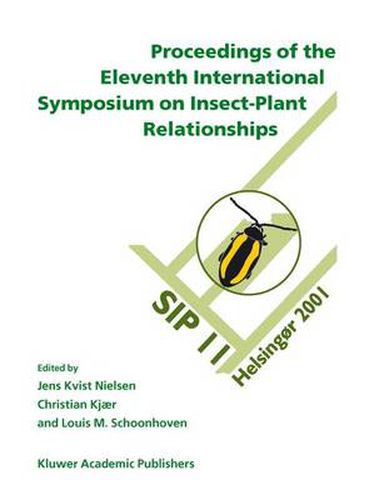Readings Newsletter
Become a Readings Member to make your shopping experience even easier.
Sign in or sign up for free!
You’re not far away from qualifying for FREE standard shipping within Australia
You’ve qualified for FREE standard shipping within Australia
The cart is loading…






This title is printed to order. This book may have been self-published. If so, we cannot guarantee the quality of the content. In the main most books will have gone through the editing process however some may not. We therefore suggest that you be aware of this before ordering this book. If in doubt check either the author or publisher’s details as we are unable to accept any returns unless they are faulty. Please contact us if you have any questions.
Large parts of the continents are covered by a green blanket of living plants. From an insect’s point of view this green blanket is not uniform, but consists of a mosaic of resources of variable quality and with various levels of noxious secondary compounds. It is the challenge of phytophagous insects to orientate and reproduce within this mosaic of resources and among hostile competitors and natural enemies. The International Symposia on Insect-Plant Relationships (SIP) provides a platform for scientists from different fields (mainly in biology and chemistry) to meet and discuss the most up-to-date findings which contribute to our understanding of the complex interactions between plants and insects. The meetings seek to unravel basic mechanisms as well as applied aspects. It is recognized that human activities now have major influence on virtually all the world’s ecosystems, and a better understanding of the dynamics of insect-plant interactions may be useful for development of new crop protection strategies and for coping with the threatening loss of biodiversity. The 11th International Symposium on Insect-Plant Relationships (SIP11), held on August 4-10, 2001, in Helsingor, Denmark, followed the tradition of previous SIP meetings and covered topics of different levels from chemistry, physiology, and ethology to ecology, genetics, and evolution of insect-plant relationships. This volume includes a representative selection of fully refereed papers as well as a complete list of all the contributions which were presented at the meeting. Reviews of selected topics as well as original experimental data are included. The book provides information for students and research workers interested in chemical and biological aspects of interactions between individuals and populations of different organisms.
$9.00 standard shipping within Australia
FREE standard shipping within Australia for orders over $100.00
Express & International shipping calculated at checkout
This title is printed to order. This book may have been self-published. If so, we cannot guarantee the quality of the content. In the main most books will have gone through the editing process however some may not. We therefore suggest that you be aware of this before ordering this book. If in doubt check either the author or publisher’s details as we are unable to accept any returns unless they are faulty. Please contact us if you have any questions.
Large parts of the continents are covered by a green blanket of living plants. From an insect’s point of view this green blanket is not uniform, but consists of a mosaic of resources of variable quality and with various levels of noxious secondary compounds. It is the challenge of phytophagous insects to orientate and reproduce within this mosaic of resources and among hostile competitors and natural enemies. The International Symposia on Insect-Plant Relationships (SIP) provides a platform for scientists from different fields (mainly in biology and chemistry) to meet and discuss the most up-to-date findings which contribute to our understanding of the complex interactions between plants and insects. The meetings seek to unravel basic mechanisms as well as applied aspects. It is recognized that human activities now have major influence on virtually all the world’s ecosystems, and a better understanding of the dynamics of insect-plant interactions may be useful for development of new crop protection strategies and for coping with the threatening loss of biodiversity. The 11th International Symposium on Insect-Plant Relationships (SIP11), held on August 4-10, 2001, in Helsingor, Denmark, followed the tradition of previous SIP meetings and covered topics of different levels from chemistry, physiology, and ethology to ecology, genetics, and evolution of insect-plant relationships. This volume includes a representative selection of fully refereed papers as well as a complete list of all the contributions which were presented at the meeting. Reviews of selected topics as well as original experimental data are included. The book provides information for students and research workers interested in chemical and biological aspects of interactions between individuals and populations of different organisms.